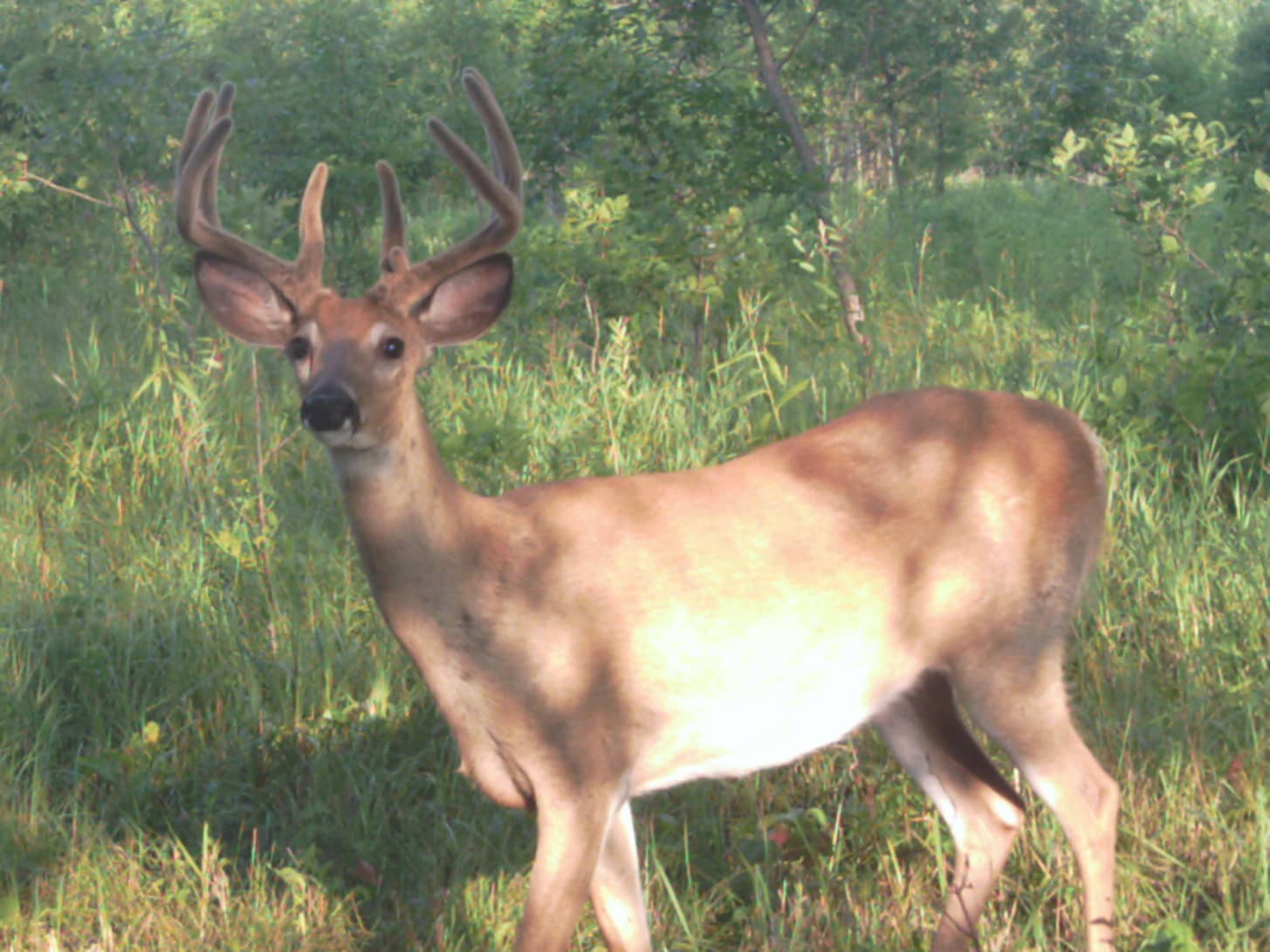
Velvet antlers make a unique trophy, and care from the field to the taxidermist is important in preserving the material for a great mount. Simonson Photo.
By Nick Simonson
South Dakota and North Dakota have some of the nation’s earliest-opening archery deer seasons.
With the Rushmore State’s bow opener on Sept. 1 and the Peace Garden State’s season kicking off at noon on Sept. 4, hunters across the northern great plains have the very unique opportunity of harvesting a whitetail or mule deer buck in velvet, while most other states open their archery opportunities a week or so after most of the material has been shed by autumn deer.
While a number of factors have to come together to result in the tagging of such a unique buck at the end of its velvet-antlered phase, hundreds of bucks are taken in the first weekend of hunting and many hunters have no idea as to what’s required from the field to the taxidermist to preserve and create such a unique mount.
“You definitely have to be very delicate with velvet antlers,” advises taxidermist Shawn Mertz of Dakota Taxidermy in Bismarck, “it varies a little bit depending on how close they are to shedding their velvet, but typically if you just handle them with care – you can touch them – but you definitely don’t want to try dragging your deer out by the velvet, because it will strip off,” he continues.
Mertz advises that hunters pack their velvet deer out, taking care to avoid bumping or brushing against the antlers as the skull and cape are put into the pack. Using a light sheet to cover the antlers will also help prevent damage to the fine coating, as a branch can easily snag or scratch them. The use of a game retrieval cart will also help transport the deer back to the truck while minimizing damage. Make certain to secure the head of the animal so that it doesn’t bounce around or bang against the cart frame, potentially damaging the velvet.
Even when there’s some damage, with the technology available today taxidermists can repair flattened or stripped velvet through a combination of means, including static charging the material to make it stand up again. Additionally, areas can be built up with a base material and artificial velvet can be used to fill in the gaps on the antlers where loss has occurred. Where a few years ago many taxidermists suggested the use of artificial velvet, the demand from hunters for an authentic mount has driven the industry back toward preserving the natural material.
With that shift, taxidermists like Mertz work with companies specializing in freeze-drying velvet to better preserve and protect those early-season antlers that come in the doors to their shops.
“It’s a big process, a lot of the time we spend three or four hours rebuilding it before we even do the artificial to try and get the mass back that everybody likes,” Mertz describes of the effort on his end to preserve an early season trophy, “out in the field right away, try to take good pictures of the velvet in case something does happen, that way the person can do the artificial and we can match up the coloration correctly; at least you have that to fall back on,” he recommends.
With North Dakota’s season opening on Sept. 4, Mertz expects to see less antlered deer come in for work this year, as the 2019 season began on Aug. 30 and the 2018 season started on Aug. 31, and there was more time early to harvest one. Hunters in Roughrider Country will have five less days at the front of the season to tag a buck and with photoperiod and hormonal changes dictating the loss of velvet in whitetail and mule deer bucks as fall approaches, the window is much smaller this season.
Mertz suggests that the cut-off for such an opportunity usually falls between Sept. 10 and Sept. 14 most years, and he already relates that some trail camera photos are coming in from clients showing a number of bucks shedding velvet as August wanes, a surprising development which he considers to be early in the autumn timeline.
“With this later season opener [in North Dakota], I’d assume that fifty percent of them will be out of velvet by the time the season opens,” Mertz predicts on the state’s herds of whitetail and mule deer, “I doubt people will have much more than a week to hunt a deer in velvet,” he states.
More information on the South Dakota deer archery season can be found at gfp.sd.gov/deer/ and North Dakota’s bow hunting opportunities are online at: gf.nd.gov/hunting/deer.
